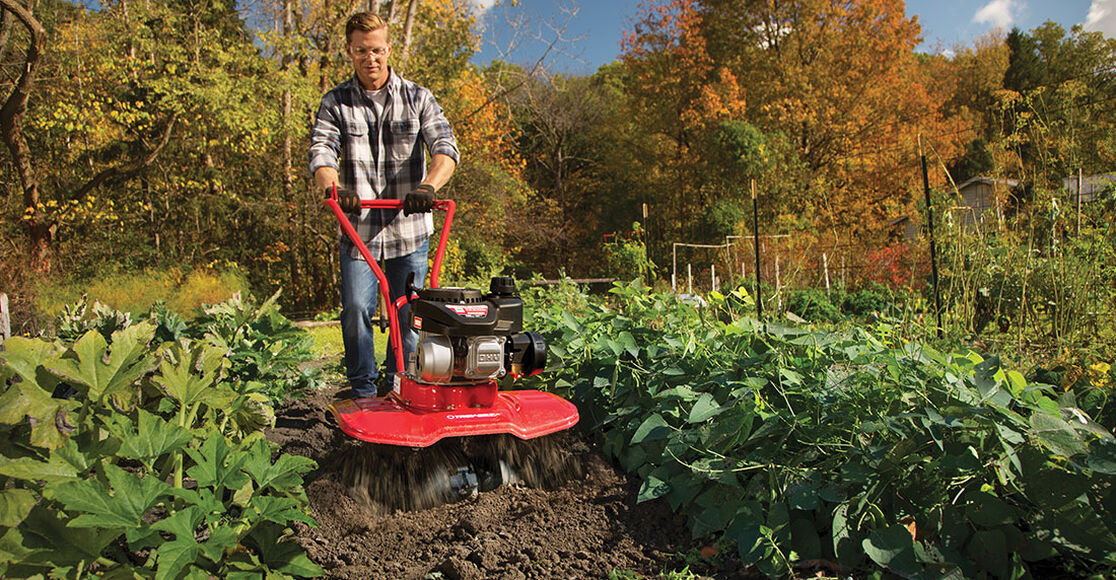Spring at last! Winter has passed, and now it's finally time for you to get back to your garden. But before you start to plant, your soil may need some TLC to get back to prime condition, as plants need an extra boost of nutrients, like nitrogen and phosphorous, to recover from winter. Tilling is one simple garden chore that can add these nutrients and loosen the soil to promote healthy plant growth. Cultivating on an annual or semi-annual basis not only eliminates weeds, it also loosens and aerates the soil for better moisture absorption and faster plant growth.
Before You Till
You should always check the state of your soil before tilling. Avoid tilling in wet soil as soil compaction can occur and lead to poor root penetration in the growing season. If it rains, it's best to wait a few days to allow soil to become semi-dry. To determine if soil is in working condition, simply pick up a ball of soil; if it falls apart in your hand when you poke it, then it is dry enough to be tilled. If it stays together in a ball, then it is too wet and needs more time to dry.
Once you've completed an initial tilling of the area, it can be beneficial to water the area and let the newly worked soil set for a day or two before making a final, deep tilling pass. This ensures a well aerated bed for planting.
Tilling Don'ts
- Do not pick a spot of land and start tilling right away. Before you select your garden location, call 811 to be connected to your states' One Call Center, which can locate and mark utility lines before you dig.
- Do not leave any debris in the garden. Clear away rocks, sticks and other loose foreign items that can be hazardous to you and the tiller's tines.
- Do not leave sod mixed in with the soil. The grass can become tangled in the tines and must be removed. Also, grass may begin to resurface as temperatures rise.
- Do not till excessively during the year. Excessive tilling can lead to compacted soil and poor garden production.
- Do not start to plant right away. Leave the soil alone for a day or two so any compost, organic materials or soil enhancements have time to decompose and provide nutrients into the soil.
Tilling Do's
- Always read your owner's manual prior to using your tiller. All models are slightly different, so you'll want to read the directions to ensure you're operating properly.
- Use a shallow tilling depth for dry, compacted soil or a medium setting for soft ground.
- Engage the drive and slowly create parallel lines, similar to the process you follow when mowing the lawn. Once you finish the parallel rows, rearrange the tiller to its deepest depth and create rows perpendicular to the rows you just made.
- Till about 6-8 inches deep, unless your plants benefit from a specific depth. Consult your seed packets or local nursery for more information.
- If you are tilling a smaller, established landscape bed consider using a front-tine tiller. This design allows for the tiller to cut, dig and turn soil in smaller areas.



